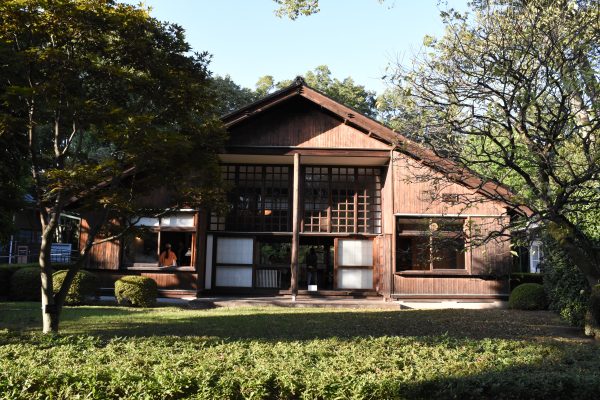The Kanda Matsuri is a Japanese festival which is held every two years a large festival is held in the Kanda, Akihabara and Ochanomizu area.
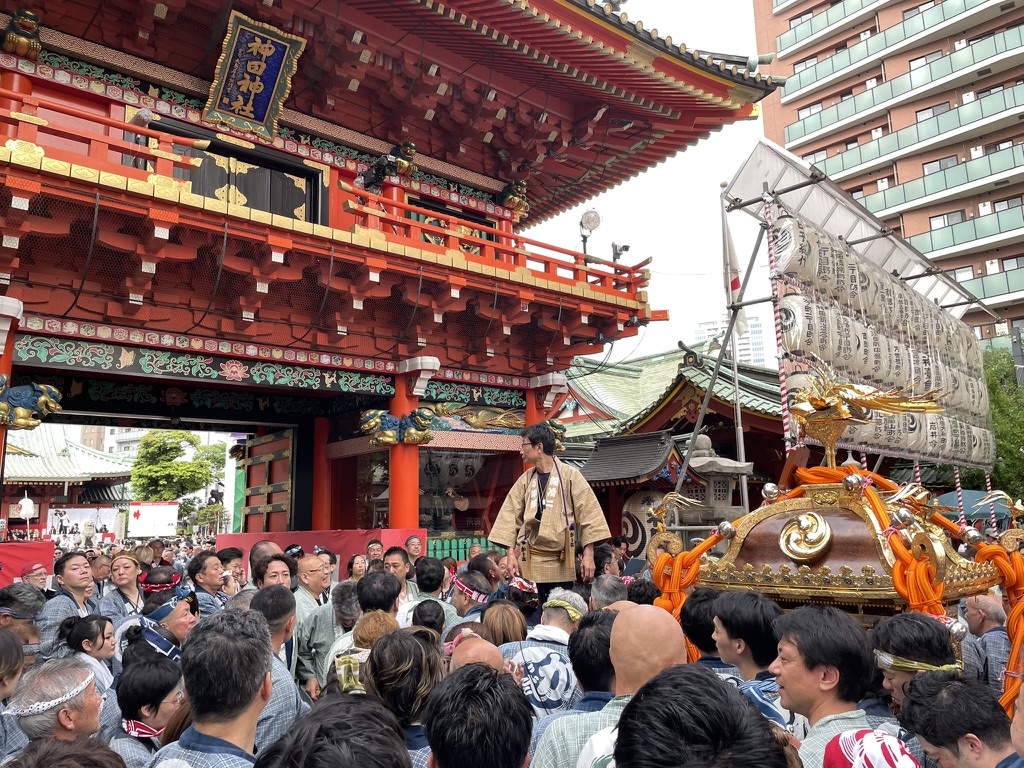
Kanda Matsuri History
Centred around Kanda-Jinja Shrine, it is considered one of the three great festivals of Tokyo and is a vibrant spectacle with parades, portable shrines, and traditional performances.
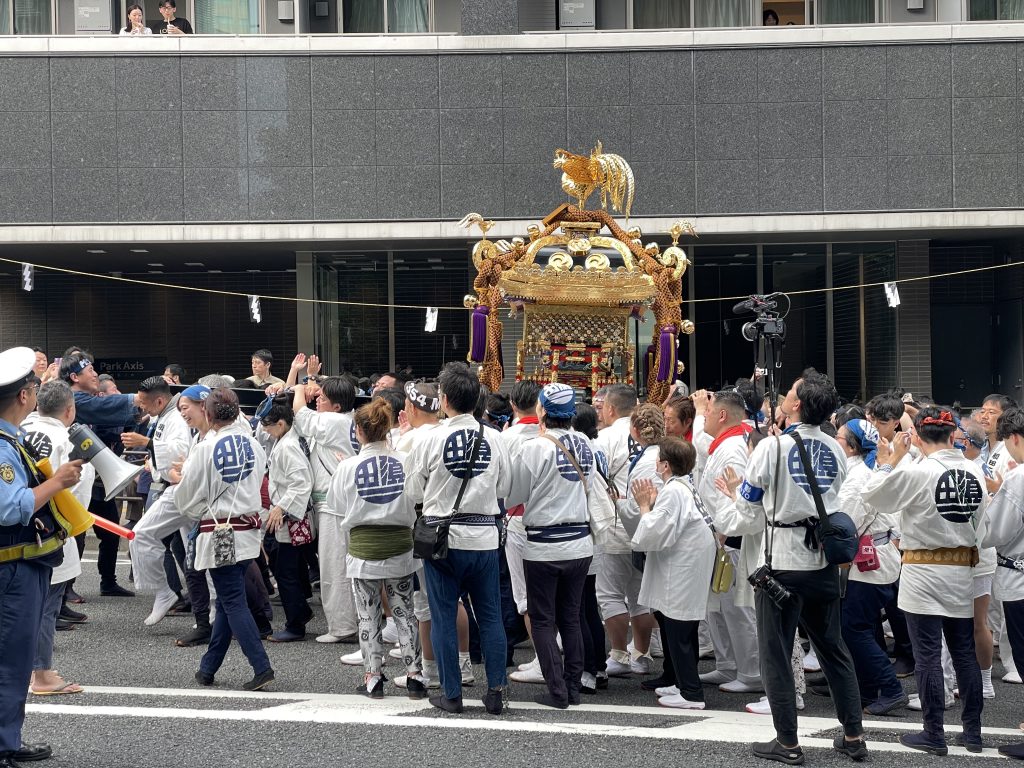
The festival has been celebrated for 1,300 years and was particularly prominent during the Edo period (1603-1867), demonstrating the prosperity of the Tokugawa shogunate.
Back then, the Kanda Matsuri and the Sanno Matsuri were the only two festivals that were allowed to pass through the Edo Castle grounds. Both were originally held annually, but after competition between the two had grown too intense, they were eventually ordered to be held in alternate years only.
The Kanda Festival consists of numerous events held over an entire week, but the main action usually happens over the weekend closest to May 15.
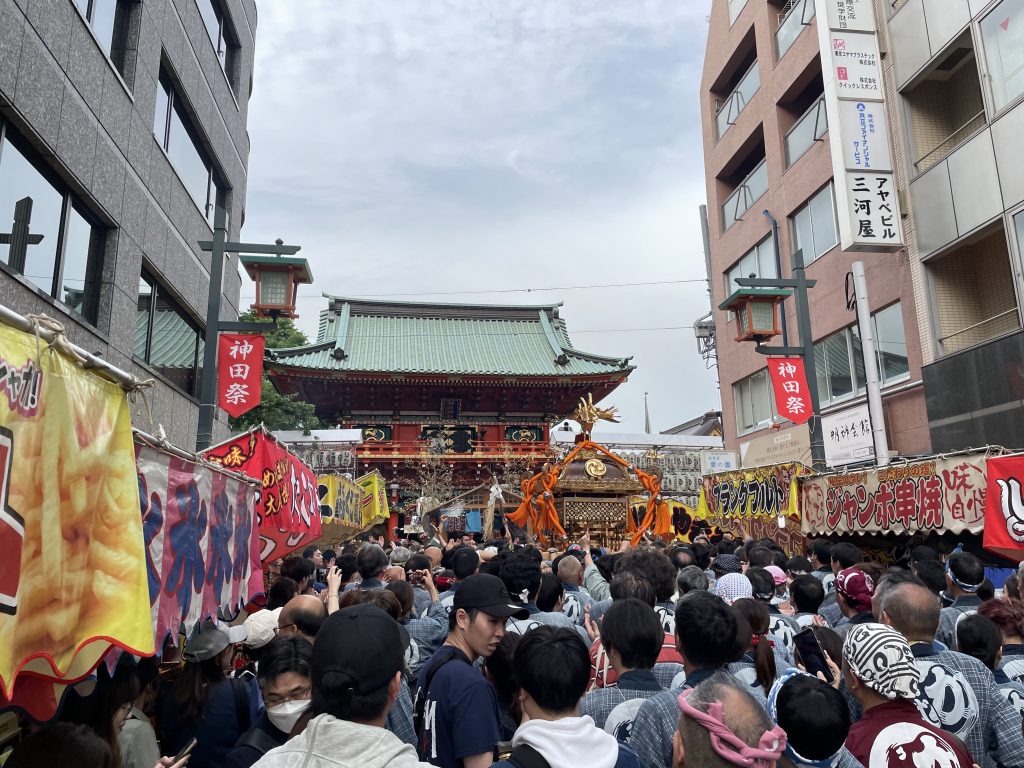
The Kanda Matsuri is the festival of the Kanda Myojin Shrine which enshrines three deities: Daikokuten, the god of good harvest and matrimony, Ebisu, the god of fishermen and businessmen, and Taira Masakado, a rebellious feudal lord of the 10th century who was revered and deified.
Over the years, the Kanda Festival came to be a celebration for the wealth and good fortune of the people.
The Festival
Shinto rituals are held to invite the spirits of the shrine’s three deities into three ornately decorated Mikoshi.
These portable shrines constitute the most important part of the procession that takes place on Saturday and Sunday when they are paraded through the streets accompanied by about a thousand people, including musicians, priests on horses, and many dressed in colourful traditional costumes.
Every neighbourhood has a local guardian deity (Ujigami) who looks after the community and their families. During the parades, the Ujigami are temporarily housed in Mikoshi (portable shrines) and walked through the streets to bless the local residents.
A good location to catch the activity is along the main approach to Kanda Myojin Shrine, since most of the mikoshi eventually make their way to the Shrine.
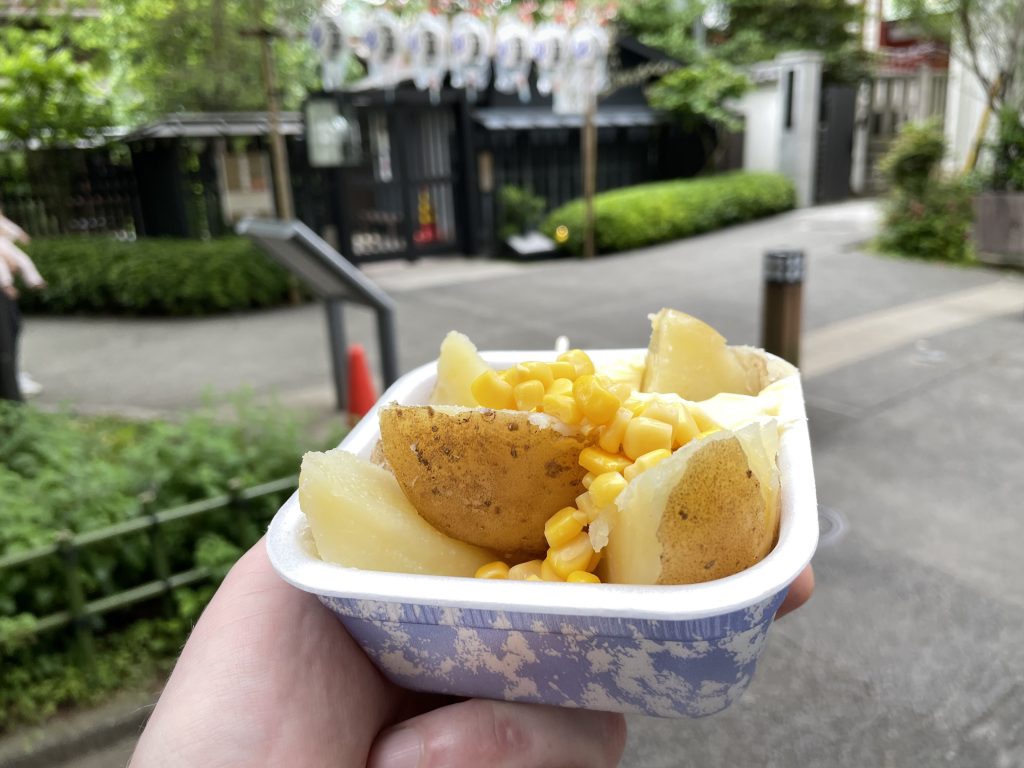
Of course, as is always the case with large festivals in Japan, there are many delicious choices for festival food!
Video
You can watch my footage of the last day of the festival here. Please consider subscribing to my YouTube channel for more Japan related content.
Thank you for reading!


